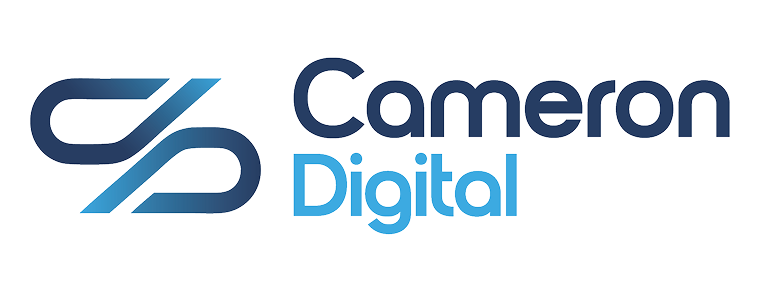You pour hours into ad copy that barely nudges your conversion rates. Most marketers miss simple shifts that make all the difference in landing page optimization. This post breaks down how to write high-converting copy, covering audience understanding, crafting...
Mastering the ROI of Paid Advertising: A Guide for Marketers and Business Owners

Categories
You may also like…
Essential Best Practices for Mobile Website Performance
Most websites lose over half their visitors because pages don't load quickly or navigation feels clunky on phones. If your site isn't built with mobile optimization in mind, you're missing out on traffic and better rankings. This post breaks down simple steps like...
Harness the Power of Social Media Advertising for Black Friday Promotions
Black Friday marketing can make or break your holiday sales. Many small businesses miss key chances because their email campaigns and website aren't ready for the rush. This post breaks down simple marketing tips, like timing urgency-driven offers and boosting social...
In digital marketing, understanding the ROI of paid advertising is crucial for businesses aiming to maximize their investment returns. As marketers and business owners allocate significant budgets to platforms like Google Ads and Facebook Ads, the challenge lies in effectively measuring the success of these campaigns. Navigating through key paid advertising metrics and utilizing advanced advertising tracking tools can transform vague impressions into concrete data, empowering you to calculate advertising ROI with precision. This guide will serve as your trusted advisor, offering expert insights into optimizing display campaigns ROI and enhancing the effectiveness of your advertising strategies. Embrace data-driven advertising decisions to confidently steer your business towards greater profitability and success in the competitive marketplace.
Understanding Paid Advertising ROI
To master the ROI of paid advertising, it’s crucial to grasp the fundamental concepts and metrics involved. This section will break down the key components of measuring and calculating ROI, as well as addressing common challenges faced by marketers and business owners.
Key Metrics to Track
When evaluating the success of your paid advertising campaigns, several metrics demand your attention. These indicators provide valuable insights into your campaign’s performance and help guide your decision-making process.
Click-Through Rate (CTR) is a primary metric that measures the percentage of people who click on your ad after seeing it. A high CTR suggests that your ad is relevant and compelling to your target audience.
Conversion Rate is another critical metric, indicating the percentage of users who complete a desired action after clicking on your ad. This could be making a purchase, signing up for a newsletter, or filling out a contact form.
Cost Per Click (CPC) and Cost Per Acquisition (CPA) are financial metrics that help you understand the efficiency of your ad spend. CPC tells you how much you’re paying for each click, while CPA reveals the cost of acquiring a new customer or lead through your advertising efforts.
Calculating Advertising ROI
Calculating advertising ROI is essential for determining the effectiveness of your marketing efforts. The basic formula for ROI is (Revenue – Cost) / Cost, expressed as a percentage.
To calculate your advertising ROI accurately, you need to track both the costs associated with your campaigns and the revenue generated from them. This includes not only the direct ad spend but also any related expenses such as content creation or landing page development.
It’s important to consider the lifetime value of a customer when calculating ROI, especially for businesses with repeat purchases or subscription models. This approach provides a more comprehensive view of your advertising’s long-term impact.
Common Challenges and Solutions
Marketers often face hurdles when trying to measure and optimize their advertising ROI. One common challenge is accurately attributing conversions to specific campaigns, especially in multi-touch customer journeys.
To address this, implement robust tracking systems and use attribution models that align with your business goals. Tools like Google Analytics can help you understand the customer journey and assign appropriate credit to each touchpoint.
Another challenge is dealing with long sales cycles, particularly in B2B industries. In these cases, focus on tracking micro-conversions and leading indicators of success, such as email sign-ups or content downloads, to gauge campaign effectiveness before the final sale.
Essential Advertising Tracking Tools
To effectively measure and optimize your paid advertising ROI, you need the right tools in your arsenal. This section will explore some of the most powerful tracking tools available for Google Ads and Facebook Ads, two of the most popular advertising platforms.
Google Ads ROI Tools

- Google Ads offers a suite of built-in tools to help you track and improve your ROI. The Google Ads Conversion Tracking feature allows you to see which ads are driving valuable customer actions.
- Google Analytics integration provides deeper insights into user behavior after they click on your ads. This tool helps you understand how visitors interact with your website and which paths lead to conversions.
- The Google Ads ROI Calculator is a simple yet powerful tool that helps you estimate the potential return on your advertising investment. By inputting your average order value, profit margin, and conversion rate, you can project the ROI of your campaigns.
Facebook Ads Effectiveness Tools

- Facebook Ads Manager is the primary tool for tracking the performance of your Facebook ad campaigns. It provides detailed metrics on reach, engagement, and conversions.
- The Facebook Pixel is a crucial tool for tracking conversions and building audiences for retargeting. By installing this code on your website, you can track specific actions users take after clicking on your Facebook ads.
- Facebook Analytics offers in-depth insights into your audience’s behavior across your Facebook page, website, and app. This tool helps you understand your customer journey and optimize your marketing funnel.
Frameworks for Data-Driven Decisions
Making data-driven decisions is crucial for optimizing your advertising ROI. This section will provide you with practical frameworks to calculate your ROI accurately and make informed adjustments to your campaigns.
Step-by-Step Calculation Guide
- Define your key performance indicators (KPIs) based on your business goals.
- Set up tracking for these KPIs using the appropriate tools (e.g., Google Analytics, Facebook Pixel).
- Calculate your total advertising costs, including ad spend, content creation, and management fees.
- Measure the revenue generated from your advertising campaigns.
- Use the ROI formula: (Revenue – Cost) / Cost * 100 to calculate your percentage return.
Remember to consider the lifetime value of a customer when calculating ROI, especially for businesses with repeat purchases or subscription models.
Making Adjustments for Better ROI
Continuous improvement is key to maximizing your advertising ROI. Start by analyzing your data to identify underperforming ads or campaigns.
Look for patterns in high-performing ads and apply these insights to your lower-performing campaigns. This might involve adjusting your targeting, refining your ad copy, or optimizing your landing pages.
Consider A/B testing different elements of your ads to find the most effective combinations. This data-driven approach allows you to make incremental improvements that can significantly boost your ROI over time.
Optimizing Display Campaigns ROI
Display advertising can be a powerful tool for brand awareness and retargeting, but optimizing its ROI requires a strategic approach. This section will explore effective strategies for running display campaigns and methods for measuring and improving their success.
Strategies for Effective Campaigns
To maximize the ROI of your display campaigns, start with precise audience targeting. Utilize demographic, interest, and behavioral data to ensure your ads reach the most relevant viewers.
Create visually appealing and engaging ad creatives that align with your brand identity and campaign objectives. Use a mix of static images, animated GIFs, and HTML5 ads to capture attention and convey your message effectively.
Implement frequency capping to prevent ad fatigue and optimize your ad spend. This strategy limits the number of times an individual user sees your ad, helping to maintain engagement and reduce wasted impressions.
Measuring Success and Adjustments

Regularly monitor your display campaign performance using metrics such as click-through rate (CTR), conversion rate, and view-through conversions. These indicators help you understand how well your ads are resonating with your target audience.
Use A/B testing to compare different ad creatives, headlines, and calls-to-action. This data-driven approach allows you to refine your campaigns based on what resonates best with your audience.
Don’t forget to analyze the impact of your display campaigns on overall brand awareness and consideration. Tools like brand lift studies can help you measure these less tangible but crucial aspects of advertising success.
Case Studies of Marketing Wins
Cameron Digital helped a small e-commerce business increase their ROI by 150% through targeted Facebook ads. By focusing on high-intent audiences and optimizing ad creatives, they were able to significantly reduce cost per acquisition while increasing overall sales.
Key takeaways:
- Precise audience targeting is crucial for maximizing ROI
- Continuous testing and optimization can lead to dramatic improvements
- A data-driven approach allows for informed decision-making and better resource allocation
Lessons Learned from Failures
A B2B software company invested heavily in broad-reach display advertising without proper tracking mechanisms in place. They struggled to attribute leads and sales to their campaigns, resulting in wasted ad spend and unclear ROI.
Lessons learned:
- Implement robust tracking systems before launching large-scale campaigns
- Focus on specific, measurable goals rather than vague objectives like “increasing brand awareness”
- Regularly review and adjust campaigns based on performance data
By learning from both successes and failures, marketers can refine their strategies and improve their chances of achieving a positive ROI from their paid advertising efforts.



